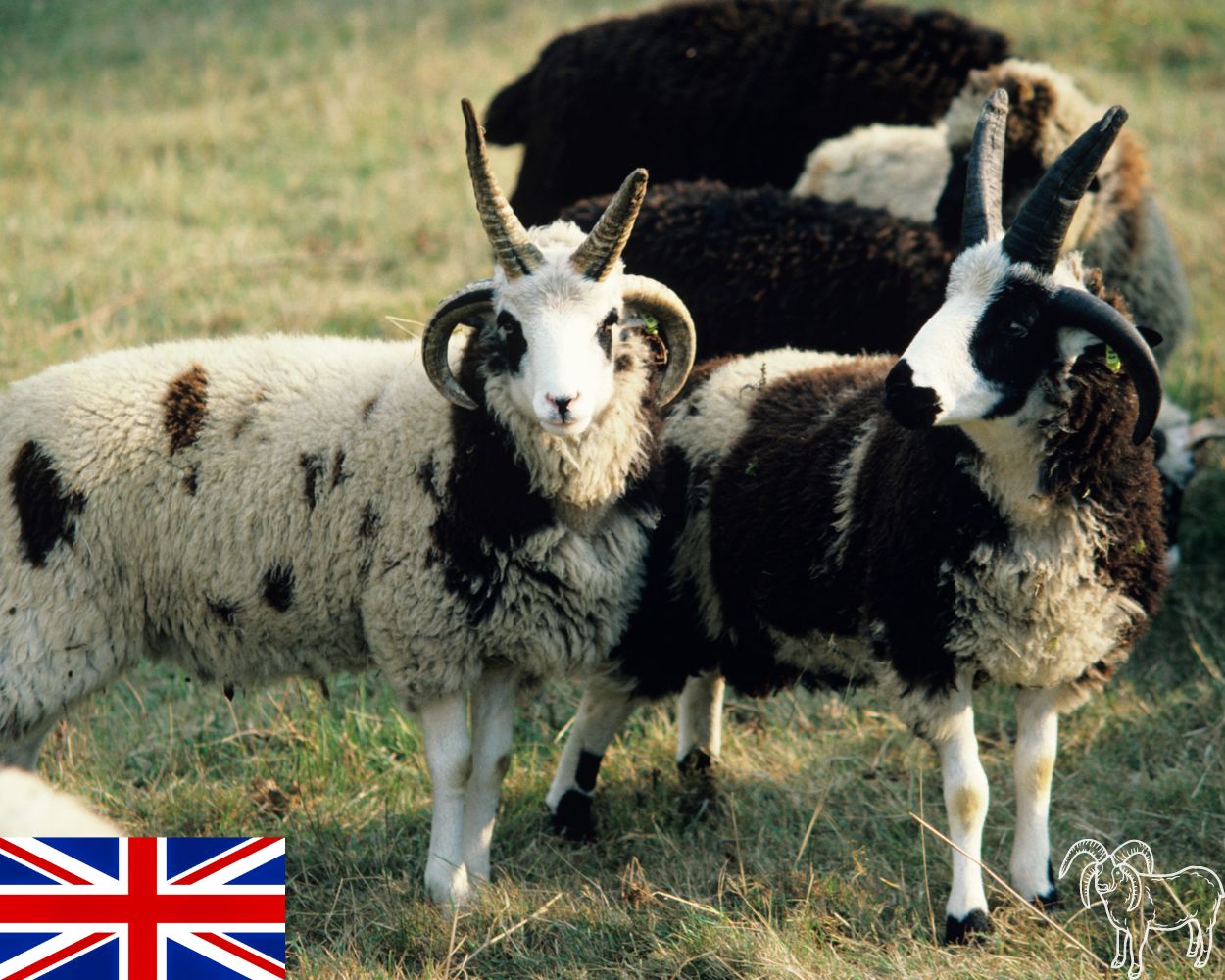
What is a Jacob Sheep?
The Jacob sheep is a heritage, multi-purpose breed of domestic sheep and one of the world’s oldest, known for its multi-horned characteristics and British origins.
Stories say that this sheep is a direct descendant of the flock tended by Jacob while he worked for his father-in-law, a narrative found in the Bible (Genesis 30).
The sheep is called Jacob sheep due to its striking similarity to the creature depicted in the Book of Genesis, earning its name from the biblical character Jacob.
Jacob Sheep Characteristics
Jacob sheep characteristics are distinctive, making them a sheep breed that manages to captivate the interest of sheep farmers, homesteaders, and animal enthusiasts.

Size
Jacob sheep has small to medium size.
Color
The Jacob sheep is white with colored spots. It’s a spotted sheep, with about 60% of its body white and 40% having black or lilac spotting.
Fleece

Jacob sheep have a fleece of medium fineness, which means it’s neither too fine nor too coarse.
The fibers in the fleece are spaced apart, letting air flow through and creating a more breathable texture.
The fleece of Jacob sheep measures between 26.40 and 36.19 microns in diameter and is 3 to 7 inches (7-17 cm) long.
Also, using the Bradford count system to measure wool fineness, the Jacob sheep falls within a range of 44 to 56, indicating a moderate level of fineness.
Head, Ears, Face, Eyes
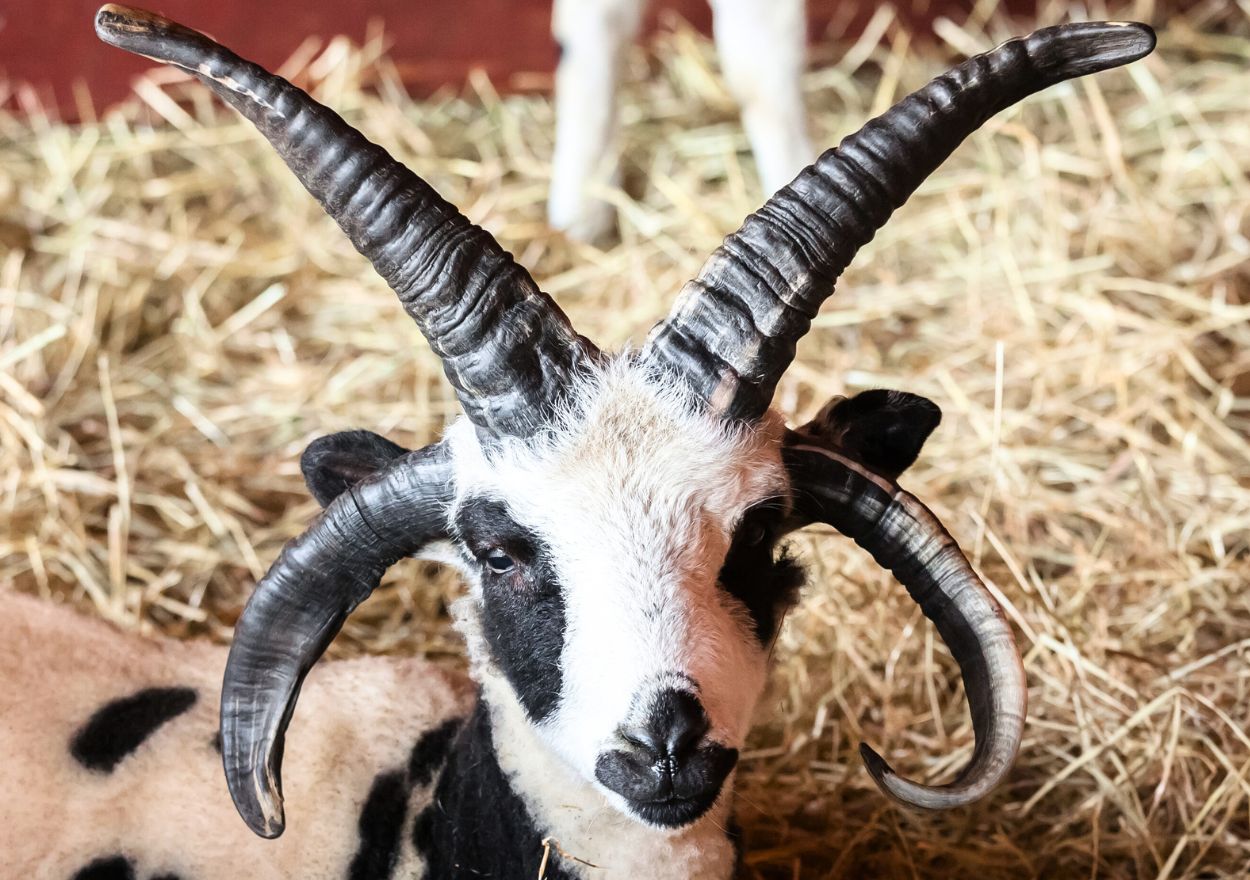
The head of this sheep has a triangular shape, a straight profile, and is slender.
The face is white with black, while the eyes are large, symmetrical, clear, and very bright. The eye color can vary from brown to blue, or even be marbled.
Below the eyes, the cheeks are well-incorporated.
The ears of the Jacob sheep are small compared to the head size, white or spotted, and erect.
Horns
Jacob sheep have anywhere from 2 to as many as 6 horns, which are either completely black or black with white markings.
Both ewes and rams can possess multiple horns, with rams typically having larger ones than ewes.
Ewes’ horns differ from those of rams, being smaller in diameter, shorter in length, and displaying an overall delicate appearance.
The 2-horned sheep have horizontally oriented, double-curled horns. The ram’s horns are well-spaced, with distinct splits between the cheeks, nose, and mouth.
In the case of 4-horned Jacob sheep, they have a pair of vertical central horns that can measure 2 feet or more in length. Also, two smaller lateral horns grow downward along the sides of the head.
The 6-horned Jacob sheep are distinctive with one pair positioned at the center and two additional pairs flanking the central pair.
From my own experience, I can tell you that while they can indeed have 6 horns, this situation is rare, and they often don’t grow correctly due to the limited space on their small head. As they mature, two pairs of horns tend to fuse, eliminating space between them at the base.
Body
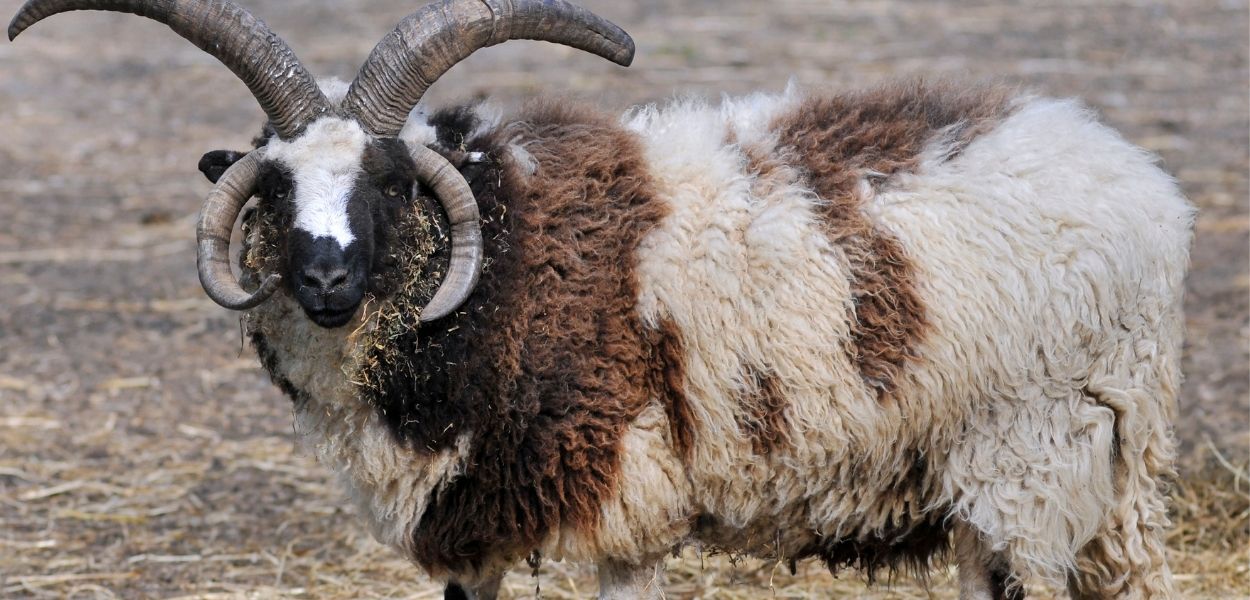
Jacob sheep have bodies with long frames and smooth muscles.
Their well-sprung ribs give them a robust appearance.
The back is straight and has a fine bone structured. The distinct slope of the rump toward the tail head adds to their unique look.
Rams have short scrotums, holding their testicles closer to the body than in modern breeds. On the other hand, ewes have small udders positioned closer to the body compared to modern breeds.

Legs
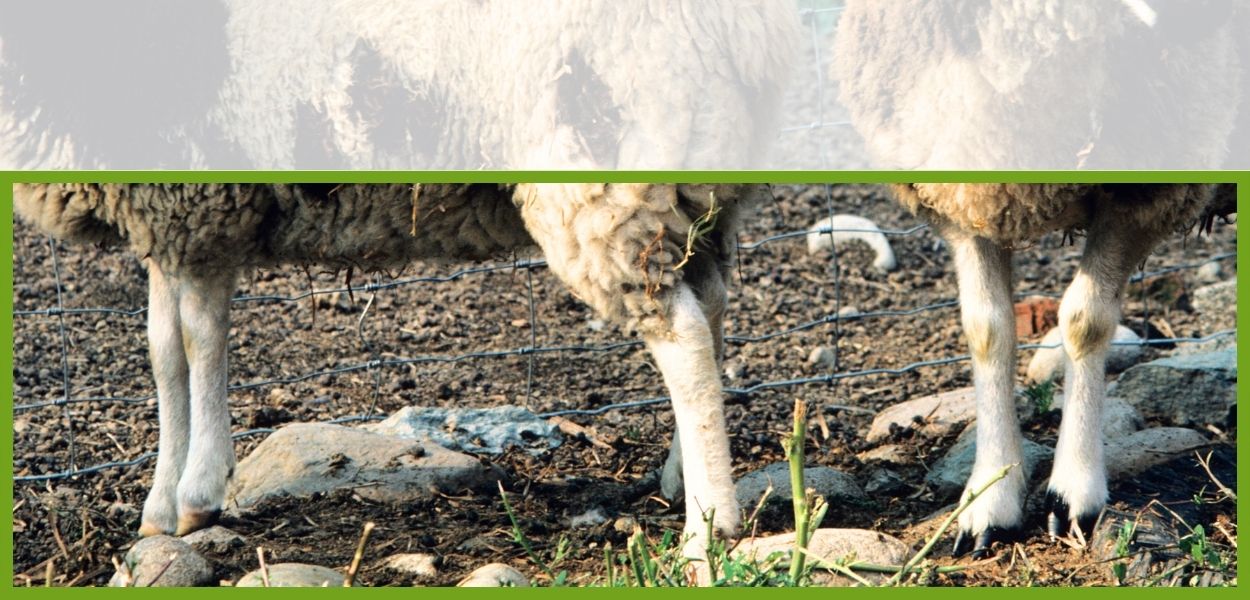
The legs are white or white with black patches, while the hooves are black or striped.
The length of the legs is of medium size, which is very suitable for their body size. They are sturdy enough to support the entire body and enable smooth movement.
Tail
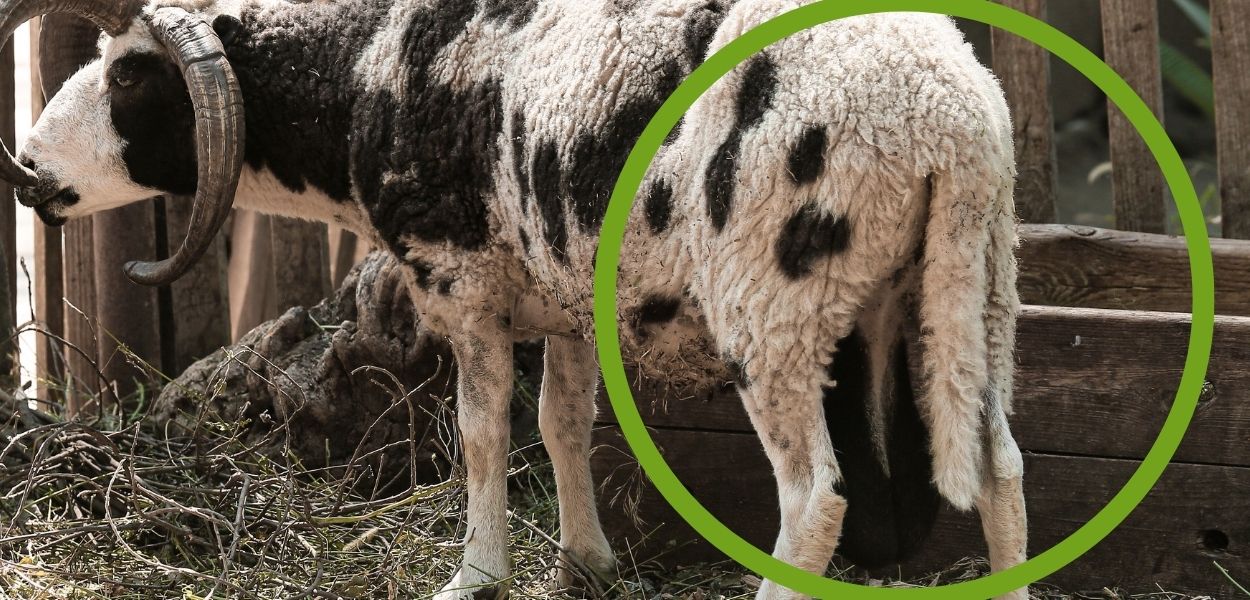
The tail is hairy and almost reaches the hock if left undocked.
Jacob sheep owners typically opt not to fully dock the tail, even for sheep intended for the market.
Lifespan
Jacob sheep can live for 12 to 14 years. This lifespan is impressive for a sheep.
But the actual lifespan is usually influenced by various factors including genetics, diet, healthcare, and living conditions.
With proper care and management, Jacob sheep can enjoy a relatively long and healthy life.
Growth Rate
How fast do Jacob sheep grow?
Jacob sheep have a slower growth rate.
These heritage sheep reach a good weight in about 1 1/2 years for both ewes and rams.
As for sexual maturity, they reach it at 12 months of age.
Weight
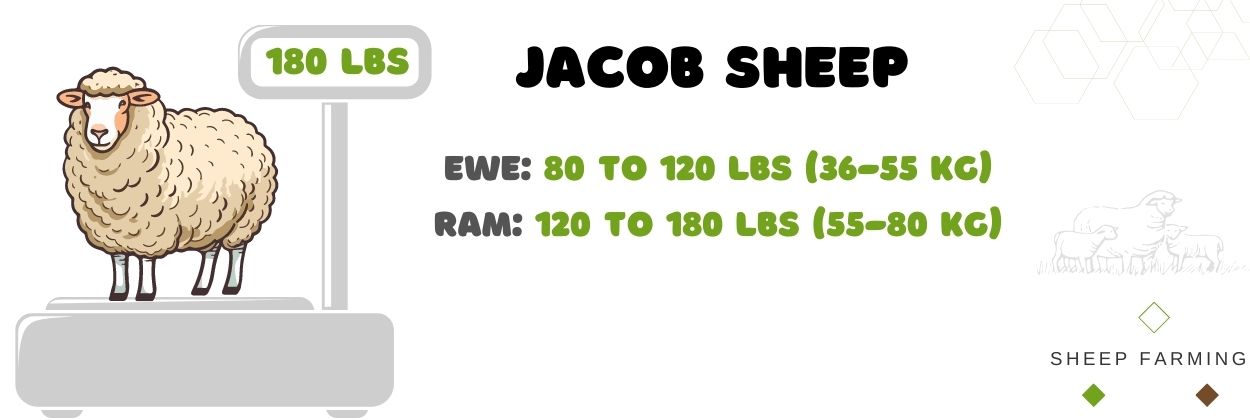
A Jacob ewe can reach a weight between 80 to 120 lbs (36-55 kg).
A Jacob ram can weigh between 120 to 180 lbs (55-80 kg).
Their height at the shoulder, known as the wither height, can range from around 22 to 28 inches (55-70 cm).
These measurements can fluctuate based on factors such as genetics, nutrition, and management practices.
Slaughtered age
Jacob sheep, especially rams, can be slaughtered at 1 to 1 1/2 years of age, while females can be slaughtered at 1 1/2 years of age.
From a Jacob ram weighing 120-130 lbs (54-59 kg), you can obtain approximately 63 lbs (29 kg) of meat, which is almost half of its total weight.
If a Jacob sheep does not reach the desired weight, you can delay the slaughter until it reaches the appropriate weight.
Jacob sheep are relatively small, so not reaching the target weight may result in obtaining a reduced amount of meat.
When to shear a Jacob sheep
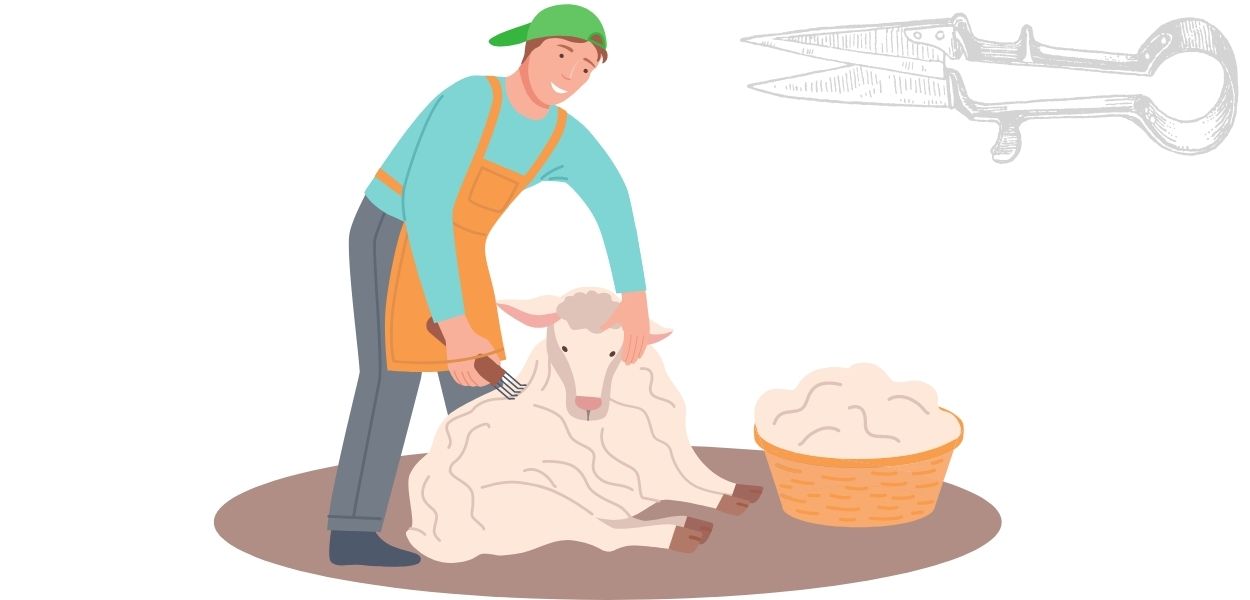
Jacob sheep must be sheared in the spring or early summer if you intend to use them for wool production.
This should be done before the hottest months of the year to prevent overheating.
Shearing at this time allows the wool to regrow before the colder months, providing the sheep with natural insulation.
Jacob sheep only need to be sheared once per year.
Here are some points to consider when shearing a Jacob sheep:
- You can shear the white and black wool separately. You must do it carefully while handling the different colors because the wool must remain clean and separated.
- Take your time when you get to the horns. Since these sheep have two to six horns, maneuvering the sheep shears is a bit difficult. Just take it slow to avoid injuring the sheep.
- The udder area is free of wool, which makes it easier when shearing.
Temperament and Behaviour
Jacob sheep are friendly and docile animals.
They are curious animals and love to explore their environment. They also have an instinct to remain alert and aware of their surroundings, making them keen observers. This natural tendency to observe their environment helps them protect the entire herd.
Their intelligence is high, and they can learn routines or simple commands with the right training. They have an independent nature and thrive on their own, not requiring constant human interactions.
They also enjoy playing and being playful when young. They engage in running, jumping, and head-butting games as forms of social interaction.
Jacob Sheep Usage
Being a multi-purpose type of sheep, Jacob sheep is primarily raised for wool, meat, and hides.
Jacob sheep produce an attractive fleece that is highly valued by fiber artists and craftspeople.
Meat

Jacob sheep are good for meat production, leading many farmers to opt for raising this breed primarily for its meat.
Despite their smaller size in comparison to other breeds, they yield a substantial amount of meat with minimal waste due to their efficient body structure.
The meat from Jacob sheep is very lean, containing only small quantities of fat due to its minimal external fat content.
Also, their meat is low in cholesterol, high in protein, and rich in essential nutrients and vitamins such as vitamin B12, B6, iron, zinc, phosphorus, selenium, vitamin B3, and B2.
Jacob Sheep meat is both tender and rich in taste.
Similar to other types of sheep meat, the meat of this sheep can be prepared using various cooking methods like roasting, grilling, stewing, or braising.
It’s important to account for the meat’s lean nature, as it may require slightly different cooking techniques than cuts with higher fat content.
Wool
Jacob sheep are grown for their medium-length wool as well.
These sheep are born with a certain amount of wool on their bodies. This first wool is known as lamb’s wool or birth wool. It is not long; rather, it is short and soft, serving the primary purpose of helping them stay warm and protected.
As they grow, the wool continues to develop.
Jacob sheep can be sheared for the first time at around 7 to 8 months of age. Of course, the exact timing of the first shearing also depends on nutrition and genetics.
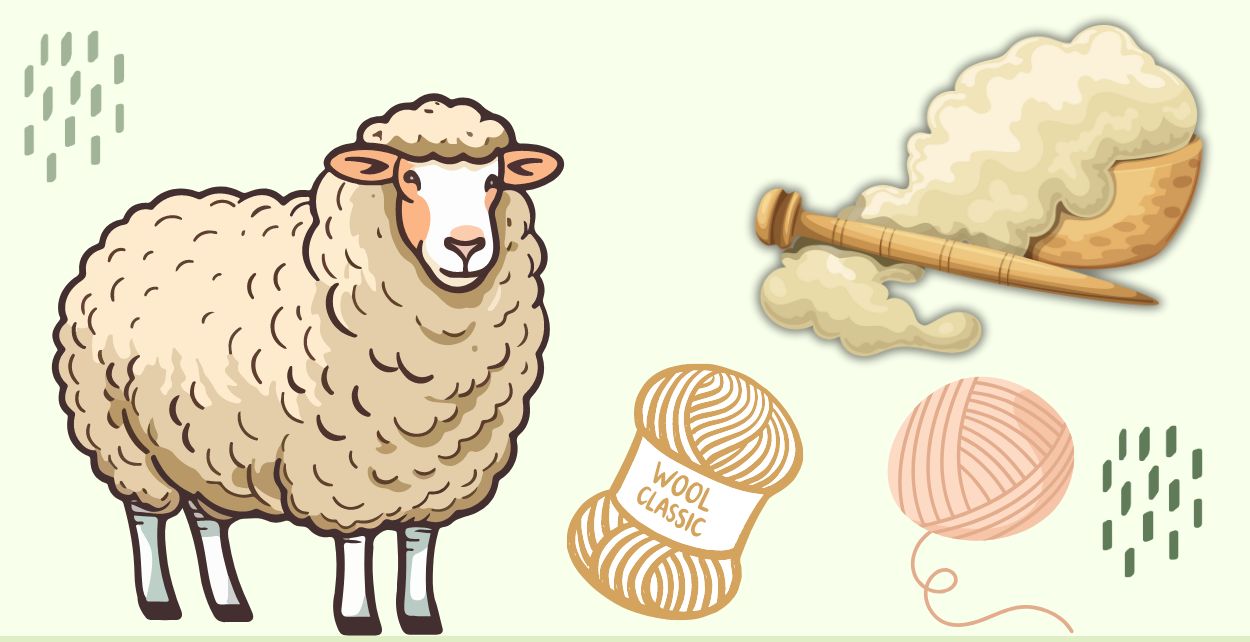
Jacob sheep are known for their unique coat patterns and colors, which can include multiple shades.
The wool is often prized for its distinct coloration and can vary from black to white, as well as various shades of gray and brown.
Jacob sheep wool is used for knitting and crocheting items such as sweaters, scarves, and hats. Also, due to its strength and texture, it is used in textiles for upholstery, rugs, and wall hangings.
Hides
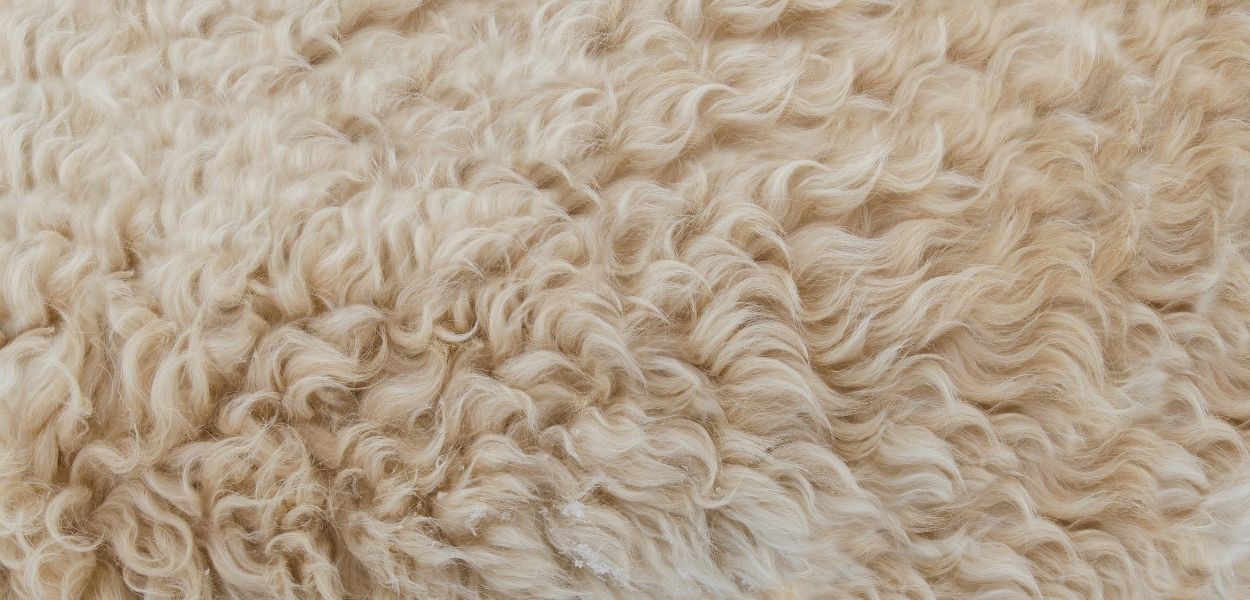
Hides or pelts are used for leather production, crafting, and home decor. In order to reach this final form, the sheep hides must be processed and tanned to ensure their durability.
Raising Jacob Sheep
Due to their small size, good temperament, and independence, Jacob sheep are easy to raise.
Still, like any other livestock, raising them requires knowledge and dedication.
Feeding Jacob Sheep
You can feed them with grains, alfalfa, grass, clover, vegetables, and hay if pasture is limited, such as during winter months.
These sheep are herbivores, and they develop really well on a diet of high-quality forage and hay.
Jacob sheep can eat 2 to 4% of their body weight in food daily.
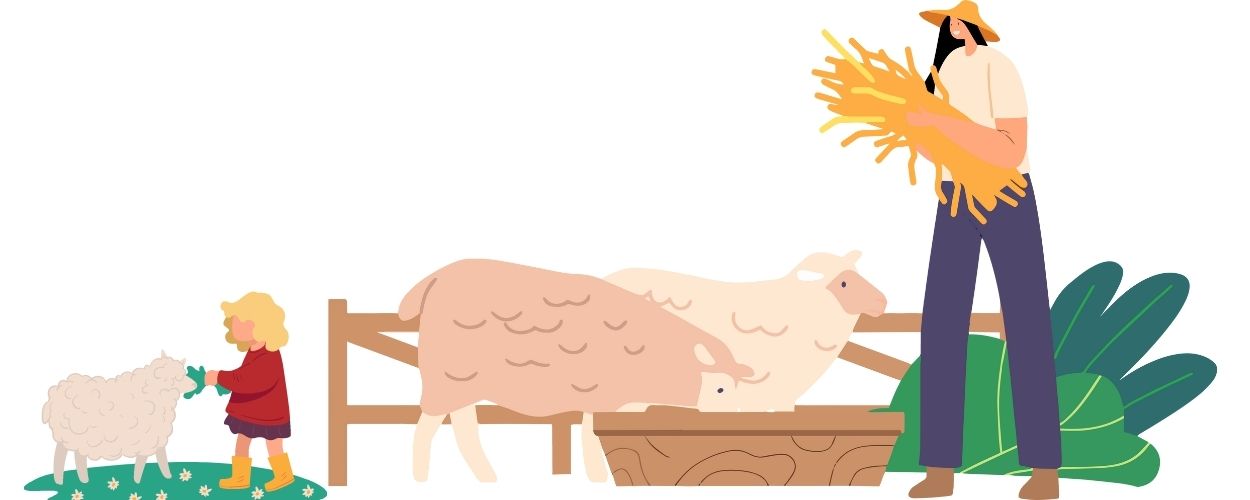
If possible, I would recommend limiting the amount of grain or concentrates, as fresh pasture primarily in their diet will really make a difference in the final meat quality.
I also suggest adding a mineral supplement to their diet. This will ensure that your sheep will not have any mineral deficiencies and will grow at a good rate.
Apart from this, you need to offer them a constant supply of clean, fresh water. Sheep can consume a significant amount of water daily, and dehydration can lead to health problems.
Environment
A great environment for Jacob sheep is a pasture-based system.
This type of environment provides them with access to pastures where they can engage in their natural behavior of grazing.
Since they are also social animals, you should keep them in groups, as this will not only stimulate them mentally through grazing but also encourage socialization.
Climate
Jacob sheep are hardy and extremely adaptable animals.
They can thrive in various climates as long as they have the right conditions. They do really well even in extreme cold or hot temperatures.
Shelter
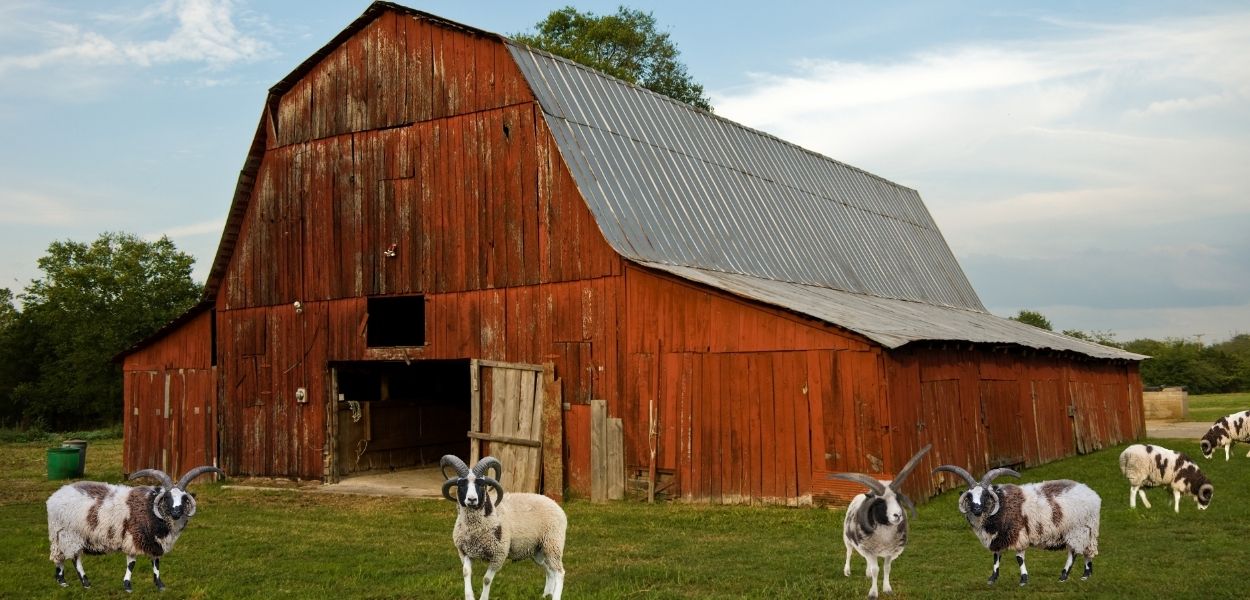
Jacob sheep require shelter from extreme weather conditions, such as wind, rain, and extreme temperatures, as well as proper fencing.
The shelter can be simple, like a well-ventilated barn with clean bedding, as long as it is open and allows them to come and go.
The fencing must be sturdy and well-maintained, as Jacob sheep are very agile and can escape easily. Proper fencing not only prevents the sheep from wandering off but also keeps predators away.

Breeding
Jacob sheep, both ewes and rams, reach sexual maturity at around 9 to 12 months of age, depending on genetics, nutrition, and season.
Why does the season matter?
Because lambs born early in the season mature faster than those born later. Also, as a meat sheep breed, Jacob sheep tend to reach sexual maturity earlier than other wool sheep breeds.
Breeding these sheep requires a careful selection of mating pairs.
If you breed them for meat, you should choose sheep with the best meat traits.
For wool breeding, focus on those with specific coat patterns.
After choosing the right pair, you must ensure that the ewe is in heat.
The Jacob ewe enters heat every 14 to 17 days, with the heat period lasting between 24 to 36 hours.
The sheep’s reproductive cycle is influenced by the season.
The amount of light entering their eyes affects their brain and hormones. Like many other sheep, Jacob sheep typically go into heat in the fall in the US and Canada.
To verify if your Jacob sheep is in heat, you have to introduce it to a ram. In the case of sheep, there are no clear signs that an ewe is in heat alone. When introduced to a ram, the ewe becomes very close to it.
The gestation period of Jacob sheep is between 140 to 145 days.
A Jacob sheep can give birth to 1 or 2 lambs per birth. The ewe has good mothering skills and takes care of the lamb.
Lambs can typically be weaned somewhere between the ages of 2 and 4 months, depending on various factors such as their health, growth, the availability of other sources of nutrition, and the specific goals of the sheep farm or management practices.
Why should you raise Jacob sheep?
These sheep are a good choice for homesteaders that are looking for a breed that doesn’t require an excessive amount of space, displays good behavior, is low-maintenance, and comes in a small size.
Their compact size means they don’t necessarily require a large pasture; a garden with ample grass is sufficient for their normal development.
Also, their small size and well-behaved nature make them ideal for individuals who aren’t necessarily farmers and have limited time to dedicate to livestock care.
Raising Jacob sheep on your homestead provides lean meat for you and your family. You can also keep them as pets, which is a very common practice with Jacob sheep.
Jacob sheep Advantages and Disadvantages
| Advantages | Disadvantages |
|---|---|
| They are a hardy sheep breed. | They are rare. |
| They are a multi-purpose sheep breed, being raised for meat, wool, and hides. | They are smaller in size and therefore have lower meat yields than other meat sheep breeds. |
| They are quite independent and do not require a lot of human attention. | They require space to graze. |
| Jacob sheep show resistance to certain health issues. | They require a sturdy fence due to their agility. |
| They are effective grazers and can help manage pasture vegetation. | |
| Ewes have good mothering skills. |
How to register a Jacob Sheep
To register a Jacob sheep, you can simply follow the steps outlined by the sheep breed registry of your choice.
For instance, reputable registries such as the Jacob Sheep Society or JSBA offer registration services.
Regardless of the registry you opt for, the following steps are generally involved:
- Begin by becoming a member of the chosen registry before initiating the sheep registration process.
- Review the registry’s breed standards to ensure that your sheep meets all the specified criteria.
- Complete the registration forms available on the official website, providing all the required information accurately.
- Attach the necessary documentation as required by the registry. Many registries ask for photographs of the sheep and copies of the sheep’s pedigree, if available.
- Pay the applicable fee, which may vary depending on the specific registry.
- Submit the completed application and await its processing.
- Finally, you will receive a certificate upon successful registration.


